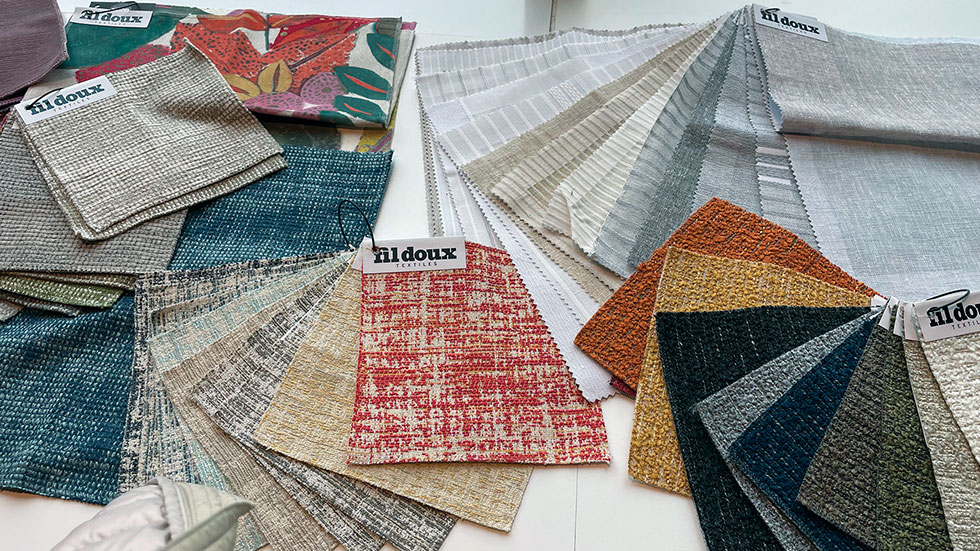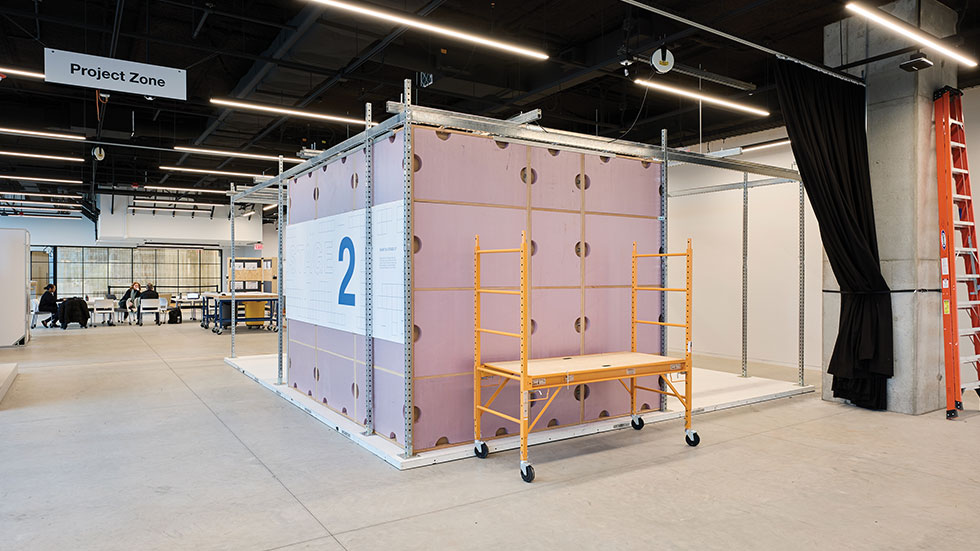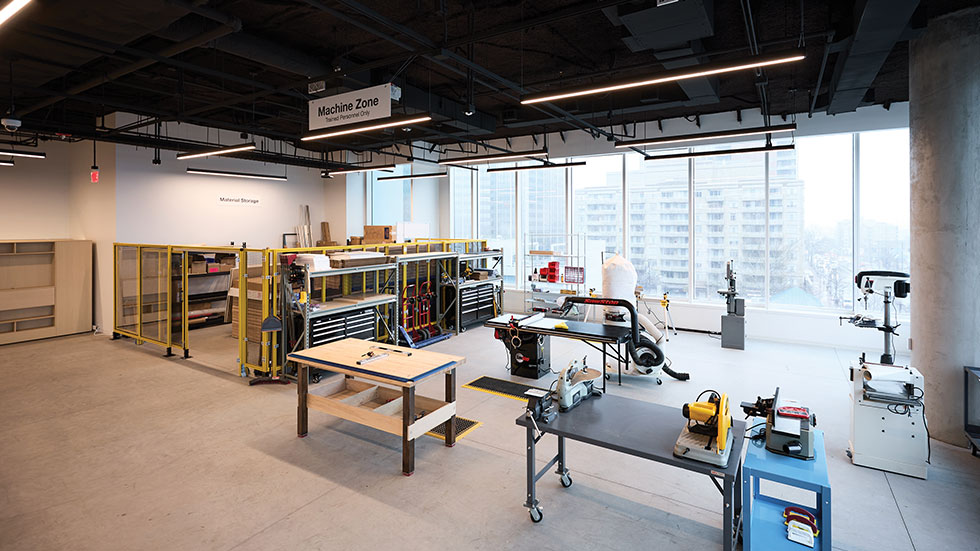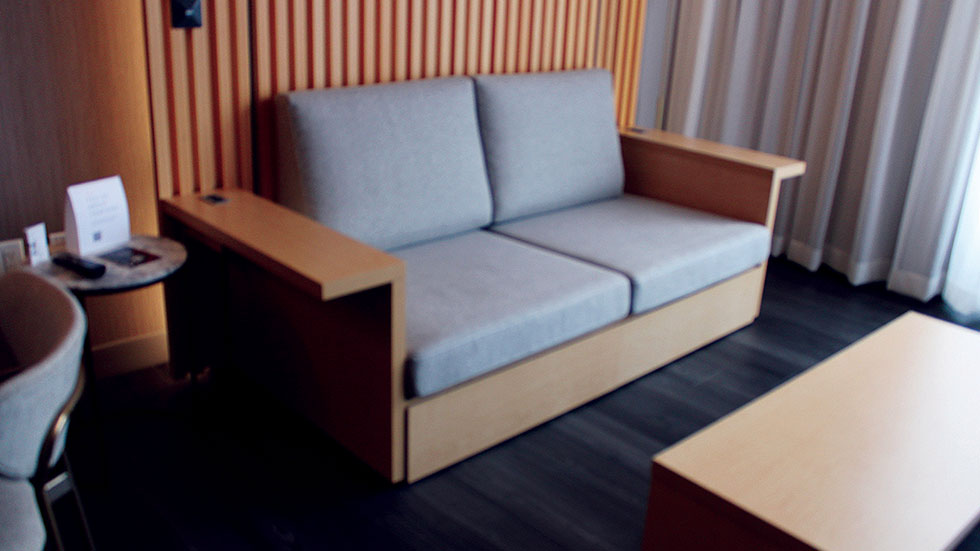
Emblazoned on a wall of the Marriott Innovation and Design Lab’s Room27—the research and development (R&D) lab named for the year (1927) J. Willard Marriott started Marriott as a nine-seat A&W root beer stand—is a quotation by Willy Wonka: “Invention, my dear friends, is 93% perspiration, 6% electricity, 4% evaporation, and 2% butterscotch ripple.”
While this kind of whimsical inscription might seem somewhat out of place within the glossy new 21-story headquarters of Marriott International in Bethesda, Maryland, it’s exactly the kind of philosophy—innovation by design—that’s a main ingredient in the recipe for Marriott’s success as the world’s-largest hotel group, with more than 8,300 properties across 30 brands in 138 countries and territories.
Here, in the cavernous space of Room27, soaring windows and blank canvases of white walls invite the imagination to fly. Marriott empowers its teams of designers and builders with creative license to conceive, construct and test ideas to make every inch and feature of a hotel room more comfortable, useful and ecofriendly.

Design DNA
It all begins with a problem to solve or a challenge to take the design of a room or room feature to the next level, explains Jason Robertson, vice president of Global Design for Marriott.
“Through R&D, we learn about spaces from different perspectives, including from Marriott guests, owners and associates,” he continues. “We also consider things like travel trends, advances in technology and sustainable design to build the future of travel.”
Building, quite literally, is part of the magic that happens in Room27. Within designated sections of the room, new designs evolve from digital mockup to materials selection to full buildout. In the first phase, large tables and ample seating serve as collaborative workspaces for conceptual “white-box” thinking. In the next phase, a modifiable shell of sorts provides a life-size model for exploring how designs may—or may not—work in a space that simulates the size, volume and layout of a hotel room. As is printed on a wall of this room, “we [designers] make our mistakes here, not in the field.”
Take the positioning of the room’s main feature, for example, says Robertson. “We think about how much space a guest needs to move comfortably between the bed and a wall as well how much space a member of the Housekeeping staff needs to comfortably make the bed and vacuum around it,” he says. “We measure and measure, down to the inch.”

In the following phase comes some sweat equity, where builders use all manner of tools—including table, band and scroll saws, ladders, sewing machines and even 3D printers—to turn concepts into reality, like furnishings. A neighboring room, the Travelers Library, brims with design and travel books, fabric swatches, countertop samples, tile samples and more, allowing interior designers to experiment with finishing touches that reflect the Marriott brand experience.
In these (and other) make-it or break-it spaces, every detail of a Marriott room has been designed, tested, refined and tested again. And again. That includes the things you see (think the desk, light fixtures, drapery and bedding), the things you don’t see (such as the HVAC and the wall construction), and the things you may not notice (like the placement of electrical outlets and the location of the shower controls).
Indeed, it’s the designers’ job to dream big so that you can sleep well.

Room at the top
Sometimes, when a select prototype passes muster in Room27, it will move next door to the Marriott Bethesda Downtown’s Floor57, a nod to the year (1957) when the first Marriott hotel was opened. (Products developed in partnership outside the lab may also take up residence on Floor57.) Here, 13 sample guestrooms serve as a beta test, where guests can stay (often at a discount) and provide feedback on the features being tested before—or rather, if—they’re brought to market.
In one room during my visit, designers were testing an expandable room with a robotic bed. Developed by robotics and architecture startup Ori, the bed, with a press of a button, lifts into the ceiling to—voila!—make way for a conversation area complete with a couch and coffee table.
Trying it out, I watched the bed slowly rise into the ceiling as if it were levitating above.
I kept one eye to the sky and got in ready position to thrust myself across the room if the bed suddenly were to free-fall. No such thing happened, of course; the bed operated perfectly. Safety is always Marriott’s priority, Robertson reassured me.

The idea of introducing expandable or changeable rooms to a hotel setting, according to Robertson, is a response to the trend of travelers who combine business and leisure and who may want more flexible space to accommodate additional guests along with a more professional atmosphere that doesn’t force people to sit on a bed.
If the expandable room pilot is a win, it will be introduced to select hotels in the Marriott portfolio. If it continues to earn high grades from hotel guests, it will be introduced to other hotels. For any given product, this process could last from several months to many years.
As it does with Ori, Marriott partners with a handful of forward-thinking companies, including LG Electronics and HVAC company Carrier, to find new solutions to common issues.
“After successfully launching an idea in our hotels, we’ll share it with the hotel industry at large,” adds Robertson. “That’s our responsibility.” And that makes what’s good for Marriott good for the entire hotel industry—and good for hotel guests everywhere.
Of course, Marriott isn’t giving away the secret in its sauce. I’d venture to guess, though, it contains at least 2 percent butterscotch ripple.

